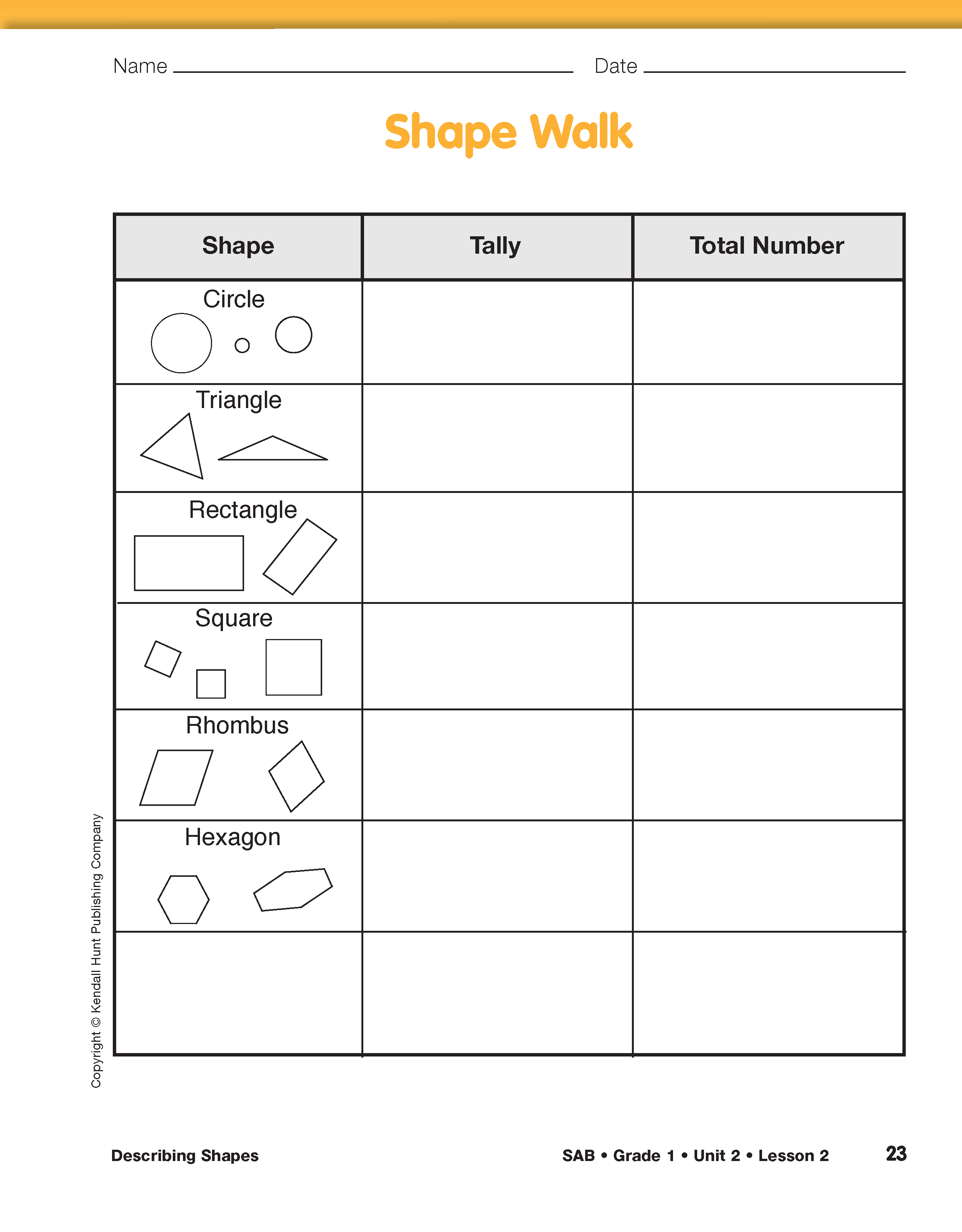Describing Shapes
Est. Class Sessions: 2–3Summarizing the Lesson
Going on a Shape Walk. Display and introduce the Shape Walk page in the Student Activity Book. Explain to students that they are going to record the shapes they see on a walk inside or outside of the school. Demonstrate how to make tally marks in the middle column and explain that each time they see a shape they will record a tally mark on the table. There is space in the table for students to add another shape if they choose to do so. When the class has completed its walk, have students write the total number of each shape in the last column.
Ask:
Compare Shapes. Ask students to complete the Alike and Different page. Remind students how to use the Venn Diagram to compare the shapes. Properties that are shared by both shapes are written in the overlap. Properties that describe only one of the shapes are written in the rectangle below the shape.

















